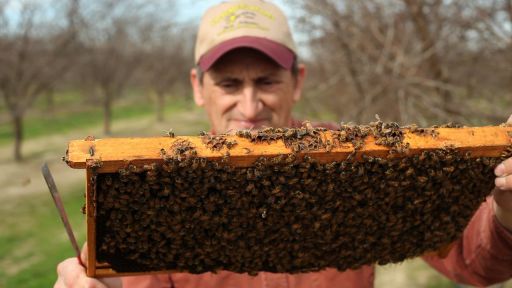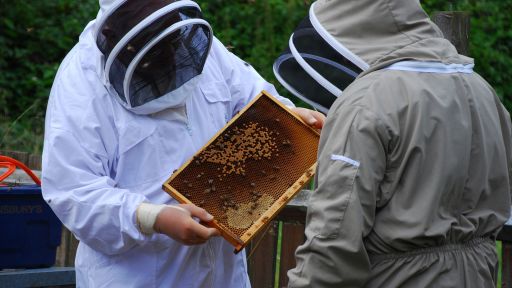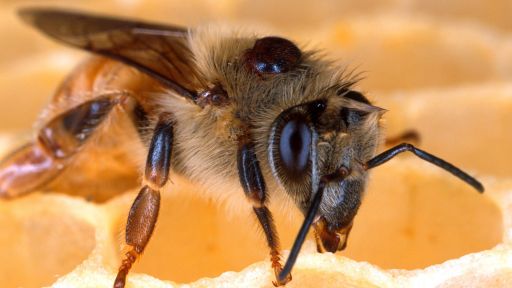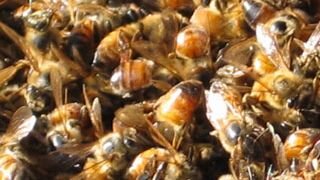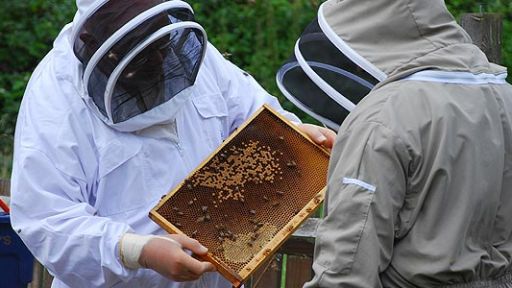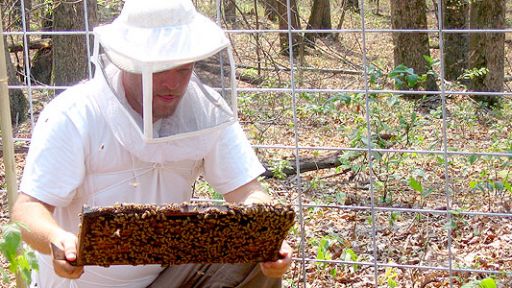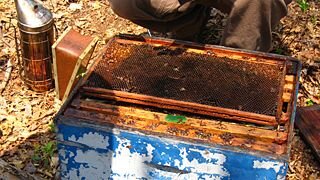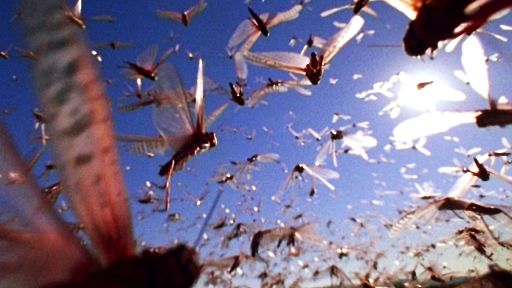Bees may be bouncing back from yearly declines, but experts remain concerned about their future.
Bees have hit it big on the national radar with their mysterious disappearing act known as CCD – colony collapse disorder – which is characterized by the sudden, complete absence of honeybees in a colony. They simply vanish, with no trace of foul play and no bodies left behind.
In late 2006, about a quarter of participating beekeepers started reporting missing colonies. And the number of apiaries reporting CCD climbed to 36 percent from 2007 to 2008. But the 2008-2009 survey found that only a quarter of apiaries reported any evidence of CCD, and the latest yearly bee survey found that commercial beekeepers reported having lost fewer bees, due to all causes, this past winter than the winters before.
“The drop in losses is encouraging,” said Jeff Pettis, one of the survey authors and research leader of the Agricultural Research Service Bee Research Laboratory. The survey – conducted by the Apiary Inspectors of America and the U.S. Department of Agriculture – checked on about 20 percent of the country’s 2.3 million colonies.
In 2007, beekeepers reported winter losses of 32 percent. In 2008, they reported 36 percent. This past year, winter losses have dropped to 29 percent.
“If the average loss is 20-25 percent, it’s sustainable to keep up a bee business,” said Dr. Eric Mussen, a honeybee expert at the University of California, Davis. “If you’re much higher than that, you’ll have to have some other income source.”
Bees die in the winter for many reasons, including starvation, pests, and CCD. In the 1970s, beekeepers expected 5-10 percent losses over the winter from starvation, diseases, or mismanagement. In the 1980s, two different mite species decimated bee populations – cutting them in half. The more aggressive mites essentially wiped out wild bees by the mid-1990s.
Honeybee populations have mostly stabilized from the mite attacks by the beginning of this decade, with beekeepers expecting losses of 20-25 percent every winter. The mites are still prevalent, but bees seem to have learned to live with them, especially with the help of chemical treatments.
While the new statistics offer a glimmer of hope, the honeybee crisis is far from over. Scientists still have not identified the causes of CCD. However, the Agricultural Research Service has undertaken a five-year research program aimed at improving the health of honeybees. Researchers and beekeepers alike hold out hope that such efforts will pay off.


